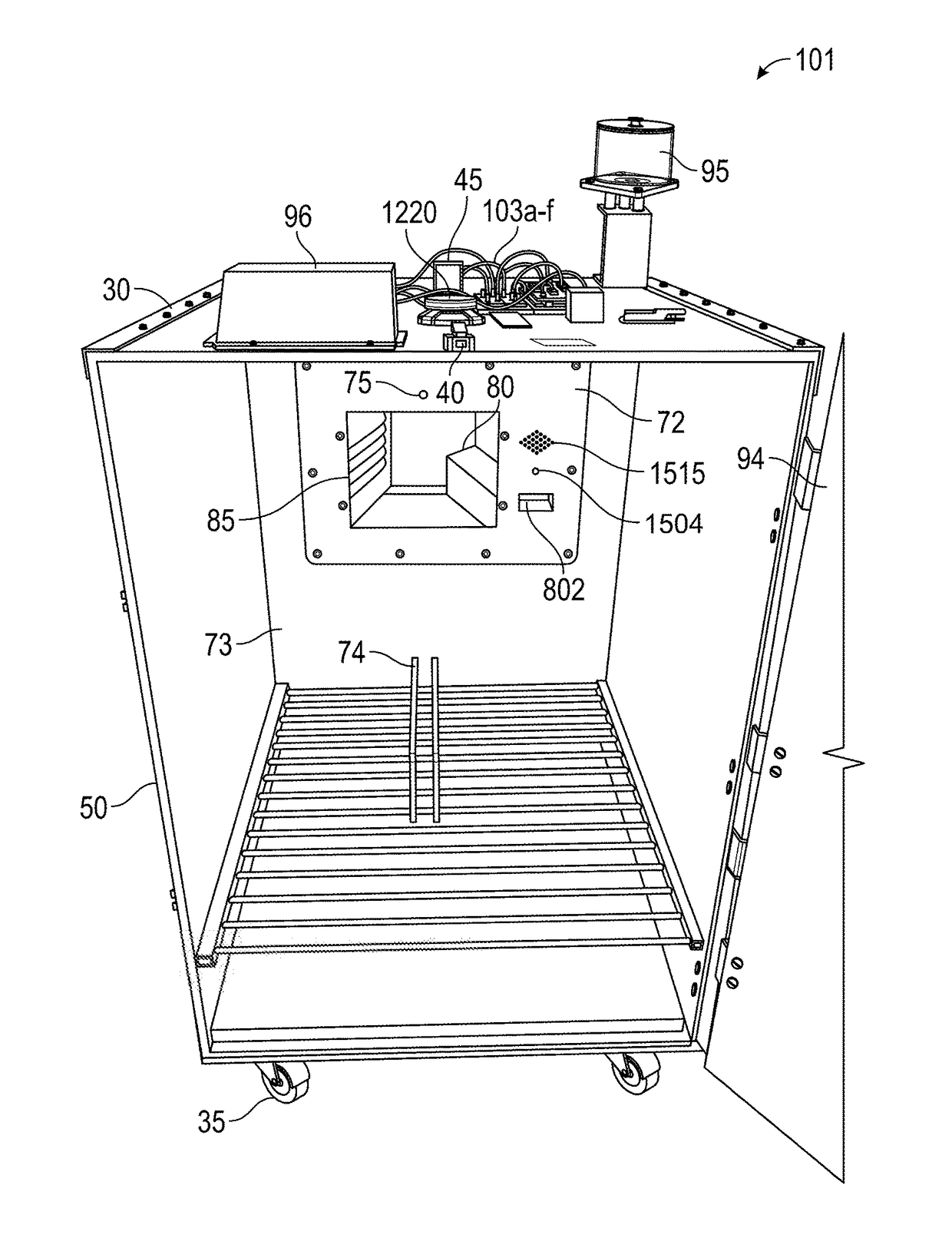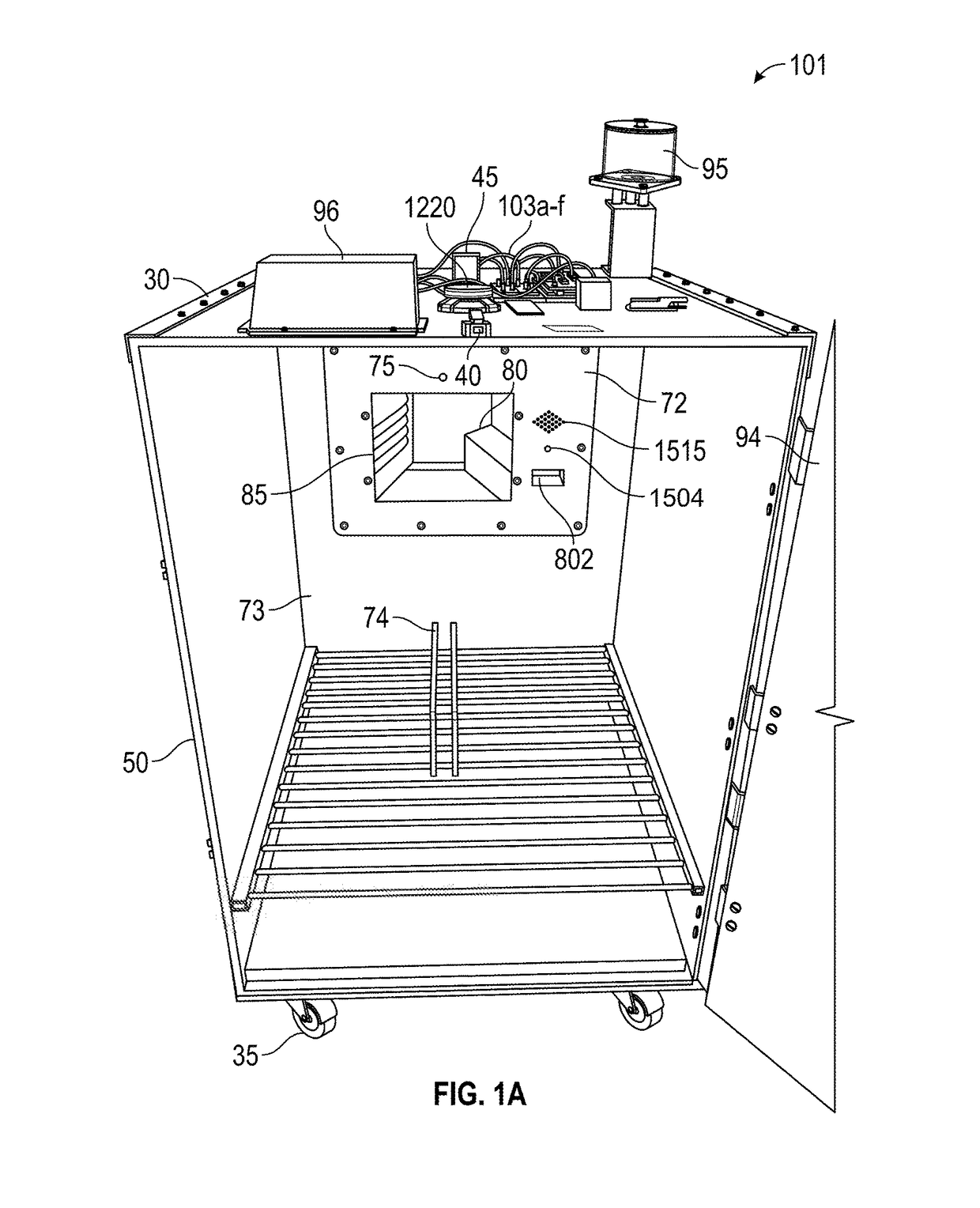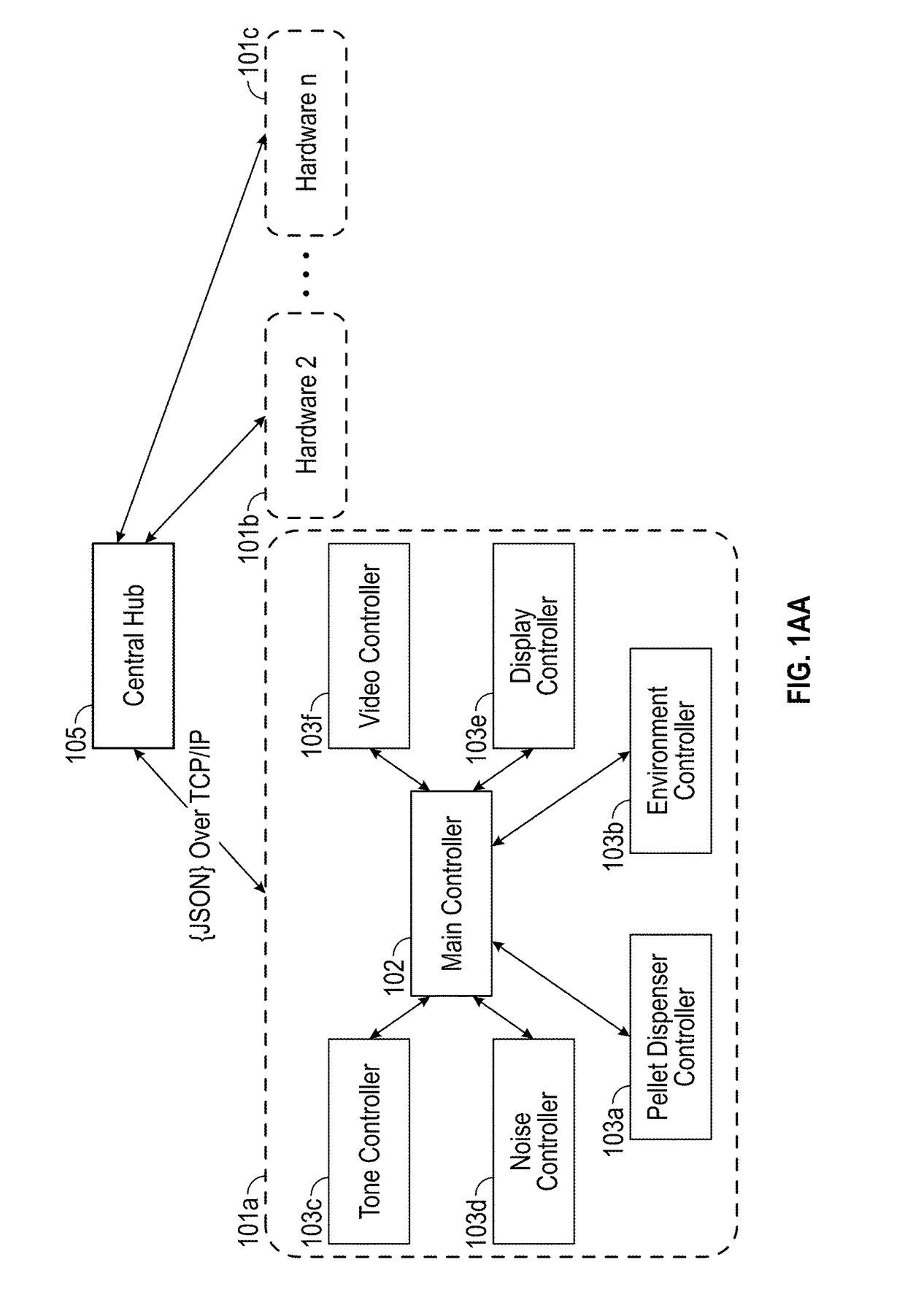Systems and methods for cognitive testing
a cognitive testing and cognitive technology, applied in the field of animal behavior testing and training, can solve the problems of inability to adapt to desired changes in testing or training devices, etc., to achieve enhanced flexibility of animal testing system, easy modification, and enhanced integration flexibility
- Summary
- Abstract
- Description
- Claims
- Application Information
AI Technical Summary
Benefits of technology
Problems solved by technology
Method used
Image
Examples
embodiment 67
[0596]receiving electrical signals over the modular interface connector from the controller board indicating a status of execution of the command by the controller board.[0597]68. The method of embodiment 67, further comprising:
[0598]sensing presence or absence of the controller board by generating electrical signals over a second modular interface connector, the second electrical signals defining a command, and sensing whether a response to the command is received over the second modular interface connector; and
[0599]adapting an animal testing capability based on the sensing.[0600]69. A system for animal testing, comprising:
[0601]a plurality of animal enclosures, an environment of each animal enclosure electronically controlled by a plurality of child controller boards; and
[0602]a plurality of main controllers, each main controller in network communication with a corresponding one of the plurality of child controller boards for a particular animal enclosure, and configured to contr...
embodiment 72
[0611]administering, by the first computer, the experiment by sending and receiving data over the connection.[0612]73. The method of embodiment 72, further comprising:
[0613]determining, at the first computer, whether there are more experiments to administer for the subject name; and
[0614]iteratively performing the method of embodiment 72 based on the determining.[0615]74. A method of executing an animal test or training protocol using an electronically controlled animal enclosure, the electronic control provided by a plurality of child controllers, comprising:
[0616]executing, via an electronic hardware computer, a boot script, the boot script configured to: instantiate a central hub and a main controller; and instantiate a web browser, the web browser configured to fetch a uniform reference locator (URL) from the main controller;
[0617]downloading, from the main controller, a display controller;
[0618]instantiating the display controller within the web browser;
[0619]establishing commu...
embodiment 109
[0695]wherein the interpreter is configured to generate the control message by at least identifying the control message format for the output device using the cognitive testing activity indicated by the test instruction.[0696]110. The system of Embodiment 109, wherein the system further comprises a second output device configured to change state during the cognitive test, and
[0697]wherein the data store is further configured to store a second control message format for the cognitive testing activity for controlling the second output device, and
PUM
 Login to View More
Login to View More Abstract
Description
Claims
Application Information
 Login to View More
Login to View More - R&D
- Intellectual Property
- Life Sciences
- Materials
- Tech Scout
- Unparalleled Data Quality
- Higher Quality Content
- 60% Fewer Hallucinations
Browse by: Latest US Patents, China's latest patents, Technical Efficacy Thesaurus, Application Domain, Technology Topic, Popular Technical Reports.
© 2025 PatSnap. All rights reserved.Legal|Privacy policy|Modern Slavery Act Transparency Statement|Sitemap|About US| Contact US: help@patsnap.com



